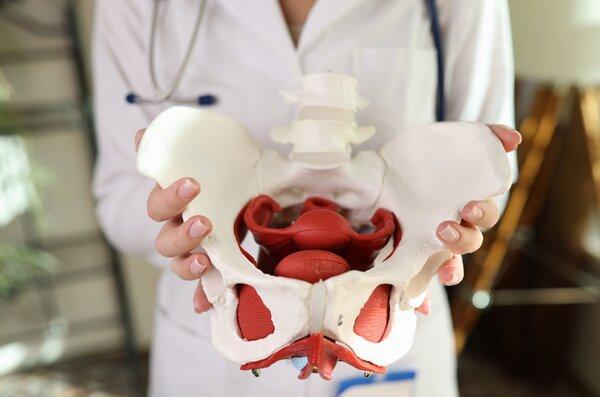
(Note: Some of the links in this post are affiliate links, and we will be compensated when you make a purchase by clicking through our links at no additional cost to you.)
Unlocking Strength and Stability: A Comprehensive Guide on How to Strengthen Your Pelvic Floor Fast
In the hustle and bustle of our daily lives, we often overlook a crucial aspect of our well-being – the pelvic floor. This oft-neglected part of our body plays a vital role in maintaining core strength, stability, and even contributes to our overall health. If you’re wondering, “How can I strengthen my pelvic floor fast?” you’re in the right place. This comprehensive guide will take you through effective and efficient ways to give your pelvic floor the attention it deserves.
Understanding the Pelvic Floor
To embark on this empowering journey, it’s essential to understand the pelvic floor. Picture it as a hammock of muscles supporting your pelvic organs, including the bladder, uterus (in women), and rectum. Weakness in these muscles can lead to various issues, from incontinence to pelvic organ prolapse.
Anatomy of the Pelvic Floor
Let’s delve into the anatomy of the pelvic floor. The muscles form a layer at the base of the pelvis, resembling a sling. They consist of the pubococcygeus, iliococcygeus, and coccygeus muscles. Knowledge of this structure is crucial as it aids in targeted exercises for maximum effectiveness.

Image Credit: pelvicguru.com
Common Causes of Pelvic Floor Weakness
Understanding the culprits behind pelvic floor weakness is the first step in combating it. Childbirth, aging, obesity, and even certain high-impact activities can contribute to weakened pelvic floor muscles. Identifying these factors in your life can guide your approach to strengthening exercises.
Fast-Track Pelvic Floor Strengthening Exercises
Now, let’s dive into the actionable steps to strengthen your pelvic floor quickly. These exercises are designed to be integrated seamlessly into your daily routine, ensuring that you experience noticeable results in a short time.
Kegel Exercises
Kegels are the go-to exercises for pelvic floor strengthening. They target the pubococcygeus muscle and can be discreetly performed anywhere. Start with a few sets of 10-second contractions, gradually increasing the duration as your muscles strengthen.
Bridge Pose
This yoga-inspired pose engages your glutes, core, and pelvic floor. Lie on your back, bend your knees, and lift your hips towards the ceiling. Hold for 10-15 seconds, then lower. Repeat for 10 repetitions.
>>> No More Leaks: Must-Read Urinary Incontinence Books
Squats
Squats work multiple muscle groups, including the pelvic floor. Ensure proper form by keeping your feet shoulder-width apart and squatting as if sitting back into a chair. Perform 3 sets of 15 squats, gradually increasing intensity.
Pelvic Tilts
Pelvic tilts are effective for isolating and strengthening the muscles in your pelvic region. Lie on your back with knees bent, and gently tilt your pelvis upward, engaging your core. Hold for 5 seconds, then release. Aim for 3 sets of 15 repetitions.
Pilates
Pilates focuses on core strength, making it an excellent choice for pelvic floor health. Incorporate Pilates exercises that emphasize the pelvic area into your routine. Classes or online tutorials can guide you in the right direction.
Lifestyle Changes for Pelvic Floor Health
Beyond exercises, lifestyle changes play a pivotal role in fast-tracking pelvic floor strengthening. Consider these adjustments to complement your workout routine.
Hydration
Proper hydration is vital for overall health, including the health of your pelvic floor. Aim for at least 8 glasses of water a day to maintain optimal muscle function and tissue elasticity.
Maintain a Healthy Weight
Excess weight can contribute to pelvic floor issues. Adopting a balanced diet and engaging in regular physical activity will not only aid in weight management but also enhance overall pelvic floor health.
Posture Awareness
Maintaining good posture is crucial for pelvic floor health. Whether sitting or standing, ensure your spine is aligned, and your shoulders are back. This simple adjustment can alleviate unnecessary pressure on your pelvic region.
Manage Constipation
Straining during bowel movements can strain the pelvic floor. Ensure an adequate fiber intake and consider consulting with a healthcare professional for guidance on preventing and managing constipation.
Congratulations on taking the first steps towards a stronger pelvic floor! By understanding the anatomy, incorporating targeted exercises, and making lifestyle adjustments, you’re on the path to a healthier and more confident you. Remember, consistency is key. Start small, gradually increase intensity, and celebrate the progress along the way. Strengthening your pelvic floor is not just about physical strength; it’s about reclaiming control over your body and embracing a life of vitality. Here’s to your pelvic floor’s newfound strength and your journey to a healthier, happier you!








